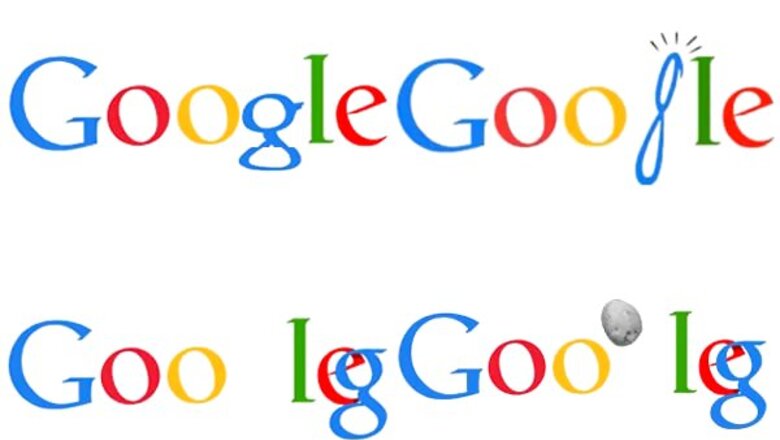
views
New Delhi: Google on Friday doodled the phenomenon of a small near-Earth asteroid - 2012 DA14 - that will pass very close to Earth on February 15. The NASA said on its website that it will be so close that it will pass inside the ring of geosynchronous weather and communications satellites.
The second 'g' of the Google logo was seen seen jumping out of place to avoid being hit by the asteroid. NASA's Near-Earth Object Program Office said it can accurately predict the asteroid's path with the observations obtained, and it is therefore known that there is no chance that the asteroid might be on a collision course with Earth.
Nevertheless, the flyby will provide a unique opportunity for researchers to study a near-Earth object up close. Here are the facts about the safe flyby of Earth of asteroid 2012 DA14 -- a record close approach for a known object of this size.
The newly discovered asteroid about half the size of a football field will pass nearer to Earth than any other known object of its size on Friday, giving scientists a rare opportunity for close-up observations without launching a probe.
At its closest approach, which will occur at 2:24 pm EST/1924 GMT, the asteroid will pass about 17,200 miles (27,520 km) above the planet traveling at 8 miles (13 km) per second, bringing it nearer than the networks of television and weather satellites that ring the planet.
Although Asteroid 2012 DA14 is the largest known object of its size to pass this close, scientists say there is no chance of an impact, this week or in the foreseeable future.
Currently, DA14 matches Earth's year-long orbit around the sun, but after Friday's encounter its flight path will change, said astronomer Donald Yeomans, with NASA's Jet Propulsion Laboratory in Pasadena, California.
The non-profit Space Data Association, which tracks satellites for potential collisions, analyzed the asteroid's projected path and determined no spacecraft would be in its way.
"There is no reason to believe that this asteroid poses a threat to any satellites in Earth orbit," Space Data operations manager TS Kelso said in a statement.
For scientists, DA14 presents a rare, albeit short, opportunity to study an asteroid close-up. In addition to trying to determine what minerals it contains, which is of potential commercial interest as well as scientific, astronomers want to learn more about the asteroid's spin rate. The information not only will be useful to plotting DA14's future visits but could help engineers develop techniques to thwart more threatening asteroids.
Even in areas that will be dark during DA14's pass by Earth, the asteroid is too dim to be spotted without a telescope or binoculars. NASA plans a half-hour broadcast beginning at 2 pm EST/1900 GMT on NASA Television and on its website which will include near real-time views of the asteroid from observatories in Australia, weather permitting.
The space camera, Slooh.com, will incorporate several live feeds, including views from the Canary Islands off the coast of Africa, in a webcast beginning Friday at 9 pm EST/0200 GMT.
####

















Comments
0 comment